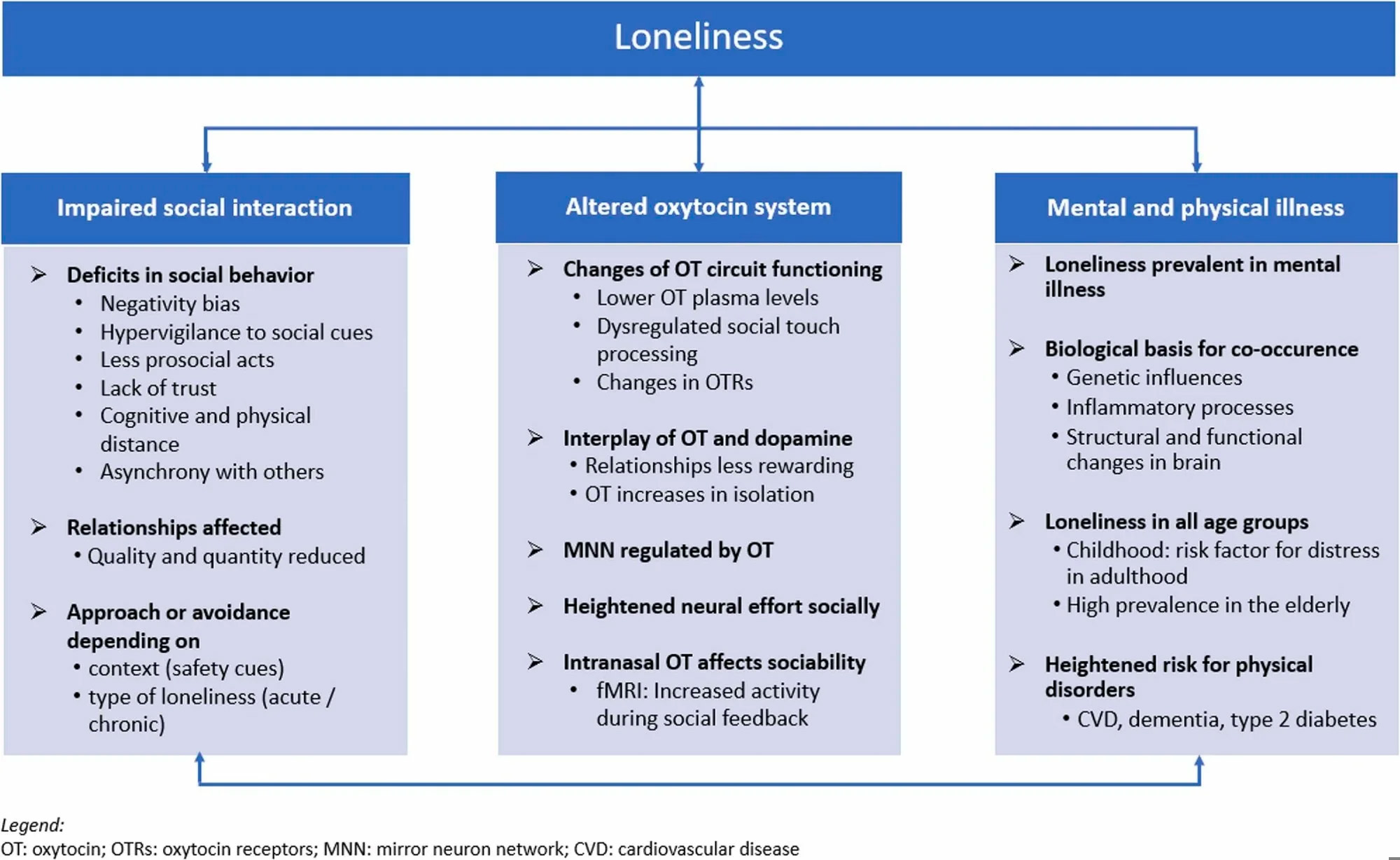
孤独是一种令人痛苦的感受,当一个人期望的社会联系水平与实际水平之间存在差距时就会产生。它通常以无法建立有意义的人际关系为特征。孤独会通过一系列社会功能障碍表现出来,而这些障碍又以各种方式持续存在着。
研究这一现象需要借鉴多个学科,包括神经科学、社会学和临床医学。《神经科学与生物行为评论》最近的一篇综述提出了一个关于孤独的多维模型。
什么是孤独?
全球孤独与联系倡议将其描述为“一种主观的、不愉快或痛苦的与他人联系不足的感觉,伴随着对更多或更令人满意的社会关系的渴望。”
因此,孤独感是主观且令人痛苦的。它无法通过诸如社会隔离或社交圈狭窄等客观参数来完全评估或预测。随着发达国家出生率的下降,老年人口中孤独感的普遍程度预计会上升。
孤独对社交互动的影响
感到孤独的人难以进行有意义的社交互动。他们关注此类互动的消极方面,体验到的满足感更少,冲突也更多。他们更加孤僻,回避同步性工作,很少寻求社交或情感上的亲密,这可以称为低社交性。
另一方面,他们可能表现出高度社交性,寻求与亲人建立关系,并体验到更多积极情绪。这可以类比大脑在一段时间的饥饿后对食物的反应。孤独感可能是对缺乏社交联系的生理反应。
孤独与催产素
催产素是一种依恋激素,它能刺激人们对社会关系的渴望。分泌催产素的细胞数量和水平会随着孤独感的增加而增加,这表明情感剥夺具有补偿作用。相反,长期孤独会以适应性的方式降低催产素水平。
孤独与疾病
孤独感会增加罹患精神和身体疾病的风险。它是抑郁症的标志,并且与重度抑郁、焦虑、人格障碍、精神分裂症、酗酒和暴食症的风险增加相关。精神疾病既可能导致孤独感,也可能加剧孤独感。

孤独的转化模型,总结了关于社交互动、催产素和疾病的主要发现
孤独人群中,心血管疾病的发病率高出30%,孤独感甚至比糖尿病更危险。它还会增加癌症患者的死亡风险,并与痴呆症相关。在某些群体中,孤独感会预示自杀意念,并可能降低自我效能,使其更难以管理疾病,并可能导致过早死亡。
结论
“在孤独的人群中,社交互动中断、催产素系统和疾病是相互关联的,认识到这些联系是理解孤独复杂结构的关键。”
未来的研究应侧重于识别和探索这些关系,以及孤独感作为因果发生的条件。此外,还应探索催产素注射以及其他对抗孤独感的预防措施在改善心理健康方面的作用。

